Barley groats are peeled and crushed grains of a plant of the Cereals family - barley. Barley has been cultivated by people for more than 10 thousand years. Its high nutritional value, unpretentiousness and a short growing season led to the widespread dissemination of this culture on the planet. Today it is no longer possible to determine in which area of the globe barley first appeared, but it has left its mark in many cultures and religions.
Material Content:
What cereal is barley made from: composition, calorie content
Barley groats are a special type of barley groats. It is produced by crushing whole barley grains peeled from the fruit shell and flower films. Depending on the size of the obtained granules, barley groats is divided into three numbers - No. 1, No. 2, No. 3. When passing cores between two shafts, they get “flakes” similar in appearance to oat flakes.
Knowing from which cereal barley groats and how it is obtained, it is easy to establish its composition.
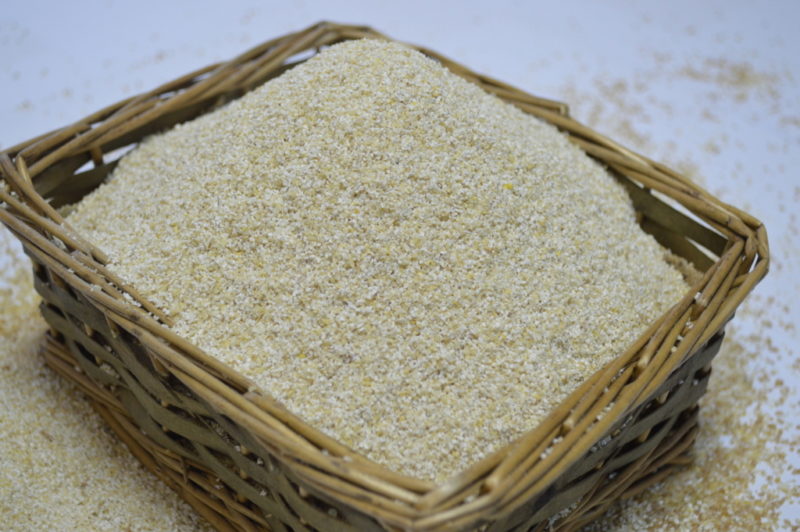
The main substances of barley grains are:
- various proteins - 9.5-12%;
- fat - 2.1-2.5%;
- fiber - 4.5-7.1%;
- carbohydrates (starch, sugar, dextrins) - 58-67%.
These substances in various quantities are located in different parts of the grain. So, for example, starch and other carbons are mainly localized in the endosperm - the inner part of the grain. The bulk of fiber (about 90%) in the shell is the aleuron layer. Protein is distributed in all parts in different proportions. Most of the protein is in the endosperm (~ 65%), and the fat is in the aleuron layer.
This is important, since the barley grains are refined and grinded during the process of processing into grits, as a result, the aleurone layer and the germ of the grain are removed.
The embryo contains the main amount of macro- and microelements, such as: calcium, phosphorus, potassium, iron, copper, zinc, chromium, manganese, iodine vitamins - B4 and B6, E, PP.
Micro and macro elements in cereal grains are contained in the form of compounds with oxygen - K2O, Na2O, CaO, MgO. Phosphorus, sulfur and iron are in the form of organic compounds.
Unlike barley, which is also obtained from barley grains, barley groats are more whole and retain all nutrients. The amount of carbohydrates determines the energy value of cereals. Calorie barley groats - 324 kcal per 100 g of product. The energy value of porridge cooked on water is only 75-100 kcal, and on milk - 115 kcal.
In addition to starch, cereals also contain other carbohydrates - sucrose, fructose, maltose, raffinose.
Barley grains contain water-soluble mucus and gum. They give the broth a peculiar consistency.
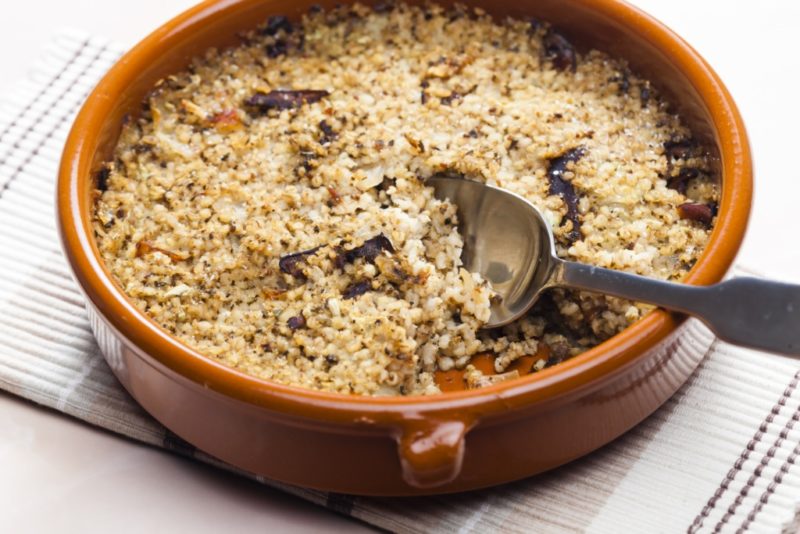
Proteins are presented in barley groats:
- albumin -0.30%;
- globulins - 1.95%;
- prolamines - 4.0%;
- gluteins - 4.5%.
In terms of gluten content, barley is ahead of all crops, second only to wheat (4.68%).
Fats in cereals are glycerides of palmitic and lauric acids. Grain grains contain substances that are close in their properties to fats - phosphatides, better known as lecithins.
Due to its complex composition, barley has long been used not only in human nutrition, brewing, and production of ethyl alcohol, but also in traditional medicine.
The benefits and harms of barley groats
The benefits of barley porridge have been known since antiquity. She was part of the diet of Roman gladiators and Russian warriors.
The well-known Japanese pharmacist and president of the Institute of Health, Yoshihide Hagiwara, who devoted ten years to the study of about 150 plants, found that it is barley that contains the largest number of nutrients that contribute to the growth, restoration, toning and strengthening of the body.
Healers recommended eating porridge porridge to accelerate the recovery of severe patients.
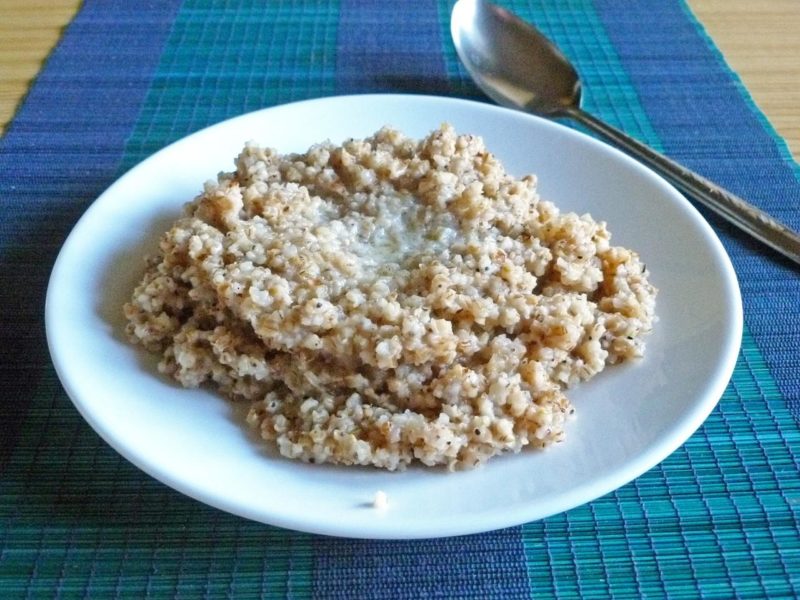
Barley porridge has on the body:
- emollient;
- enveloping;
- anti-inflammatory;
- tonic;
- general strengthening effect.
Due to the high content of fiber in porridge, which is stored in cereals when it is obtained from whole grains, it is useful for gastrointestinal diseases, accompanied by impaired intestinal and stomach peristalsis (muscle function). With constipation, the body is poisoned by harmful substances that are absorbed from the feces back into the blood. Fiber absorbs, binds and removes toxins and toxins, stimulates the digestive tract.
For allergies, barley fiber is also indispensable. It binds not only allergens, but also has an anti-inflammatory effect, normalizing the condition of patients.
The unique composition of the grain helps to cope with:
- diseases of the bladder and urinary tract;
- hemorrhoids;
- cough and some other "breast" diseases.
"Fast" carbohydrates provide the body with the necessary energy, which is especially important with high physical activity. Due to this property, barley porridge was so popular among gladiators, peasants engaged in heavy physical labor. Today, barley porridge is necessary for athletes and weakened people.
Proteins, which are rich in cells are the building material for all body tissues. Therefore, it helps the growing body, promotes recovery after surgery, accelerates the healing of wounds and postoperative sutures.
Barley, a true pantry of natural antibiotics. The bioactive substances that make up cereals include lysine and hordecin, which have antibacterial, antiviral, and antifungal properties.
Beer was made from germinated barley seeds 2000 years ago.Anthropologists and medical chemists at Emory University (Georgia, USA) found that in the remains of Sudanese residents dating back to the 1st century AD n e. there is an antibiotic tetracycline. But for the first time it was possible to isolate it only in the middle of the 20th century. It turned out that tetracycline is produced by fungi that settle on the roots of sprouted barley grains. From there antibiotics got into beer.

Bioactive substances in cereals contribute to the normalization of fat metabolism, reduces the synthesis of "bad" cholesterol, and normalizes blood sugar. It is recommended to eat with patients with atherosclerosis and diabetes.
In folk medicine, boiled barley groats in water are used as external poultices for “solid” tumors, hardening in the mammary gland, and skin diseases.
Women who regularly use barley porridge note an improvement:
- hair and nails;
- anti-aging effect on the skin of the face and body;
- weight reduction and body contouring;
- during menopause and before menstruation;
- reproductive system.
Barley porridge is also useful for older people. It normalizes the hormonal background, reduces the severity of inflammatory and age-related degenerative processes. Due to its high phosphorus and calcium content, it is useful in osteoporosis.
For the regeneration of bone and muscle tissue, not only trace elements are useful, but also the amino acid lysine, which is found in barley grits. It is she who helps athletes recover from injuries and intense training. Lysine also renews nerve fibers, therefore, patients with Alzheimer's disease and senile dementia (senile dementia) are advised to eat porridge.
The useful properties of barley groats can be enumerated endlessly, however, in addition to the undoubted benefits, barley groats are also harmful.
It is not recommended to eat when:
- existing individual intolerance to barley components;
- gluten intolerance (celiac disease or celiac enteropathy) - the absence of enzymes that break down cereal gluten;
- exacerbation of inflammatory processes in the digestive tract.
The bioactive substances of barley porridge, when used excessively during pregnancy, can cause miscarriage. But this statement has no scientific evidence.
As can be seen from the above facts, the benefits of barley porridge are incomparably higher than the harm from its use.
Can I use it for children?
Barley porridge was used in feeding children as an additive to whole milk during artificial feeding. Croup was boiled in a large amount of water (1 tsp per 1 cup of boiling water), filtered and the resulting broth was diluted with whole milk. At the same time, mucus dissolved in water prevents the occurrence of intestinal colic in infants.
Barley porridge supplies the necessary substances to the growing body of the child. Vitamins from group B normalize sleep, reduce nervous excitability, stimulate brain function, and increase appetite.
The lysine contained in barley grains is useful for adults and is simply necessary for children. He is involved in many plastic processes in the body.
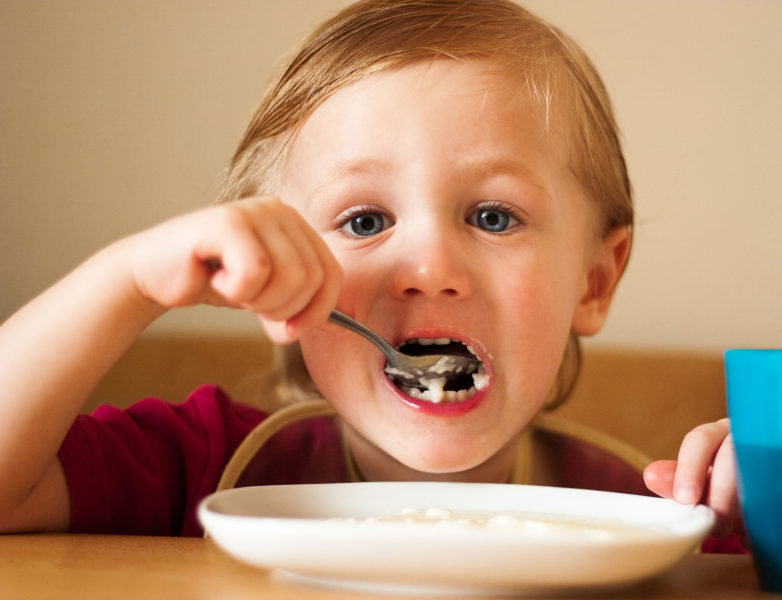
The huge role of this irreplaceable amino acid is emphasized by the fact that with its deficiency it is noted:
- increased physical and mental fatigue;
- decreased attention span, reduced memory;
- anemia;
- frequent colds and viral diseases;
- decreased visual acuity.
Lysine helps to cope with the human herpes virus, which causes not only a "cold" on the lips, but also a childhood disease - chickenpox.
Since ancient times in Russian villages with the help of barley porridge they treated such a dangerous childhood disease as scrofula.
Barley porridge is a valuable product with a balanced composition of the substances necessary for the body. Children will be happy to eat porridge, if cooked properly. Puddings and casseroles are made from it. Barley porridge is eaten with fruits, nuts, honey, which further enhances its benefits for the child's body.
How and how much to cook barley groats?
In order to cook a delicious barley porridge, one should take into account from which grain the cereal is obtained and what diameter its particles have. A thin layer of cereal is poured onto a flat dish, choosing possible debris. Then pour into a fine sieve and rinse thoroughly under running water, freeing from dust, small particles containing starch and gluten.

It should be borne in mind that during the cooking process, cereal increases several times in volume, therefore it is prepared by pouring a large amount of water - at a rate of 1: 3 (3 parts of water should be added to 1 part of cereal).
Boil barley for 20-40 minutes, and then put the porridge for evaporation in a warm place - a heated oven or wrap.
The most delicious barley porridge
There are many recipes for barley porridge, from which everyone can choose the one that he likes.
The most delicious barley porridge is cooked in a Russian oven, but for lack of such conditions in a city apartment, you can cook a dish in an oven or slow cooker.

You can make a delicious dessert from barley groats, which will not yield to the taste of the most exquisite dishes. From the smallest barley groats, cook porridge in water, pour 1 cup of porridge with 2 cups of boiling water. Not bringing it to full readiness, pour 1 cup of warm milk in which to dissolve a pinch of salt. Cool the viscous porridge a little. Beat whites with sugar separately. Grind the yolks with sugar until white. Dry the kernels of walnuts, hazel, almond in a skillet. Combine the yolks, nuts and carefully enter into the porridge. Mix. The resulting protein foam is divided into 2 parts, add vanillin to each. Introduce one part into the porridge and mix gently.
Put the resulting mixture into a greased and sprinkled with breadcrumbs form. Top with 2 parts of the protein foam and place in the oven for 10-15 minutes until the protein layer is browned. Cool the finished dish, decorate with fresh berries. Serve with milk.
Top 5 Cereal Cooking Recipes
From barley, you can cook vegetarian dishes, a full second course or a light soup.
Barley porridge with mushrooms, vegetables and minced meat.
To prepare the dish you will need:
- barley groats - 1 glass;
- fresh mushrooms - 100 g;
- carrots - 50 g;
- onion - 50 g;
- minced pork and beef - 100 g;
- vegetable oil 2 tbsp. l;
- water - 300 ml.
Rinse and dry the groats in a hot, dry pan. Pour the cereal with water, add 1 tbsp. l vegetable oil, salt to taste and simmer until half cooked, stirring. At the same time, pass the finely chopped onions, grated carrots on a coarse grater. Fry mushrooms and minced meat separately. Forest mushrooms previously boiled in salted water. Put vegetables, mushrooms and minced meat into the porridge, mix and simmer until the cereals are ready over low heat.
Dietary barley porridge with mushrooms and celery.
Porridge can be cooked in a slow cooker to maximize the preservation of nutrients in it.
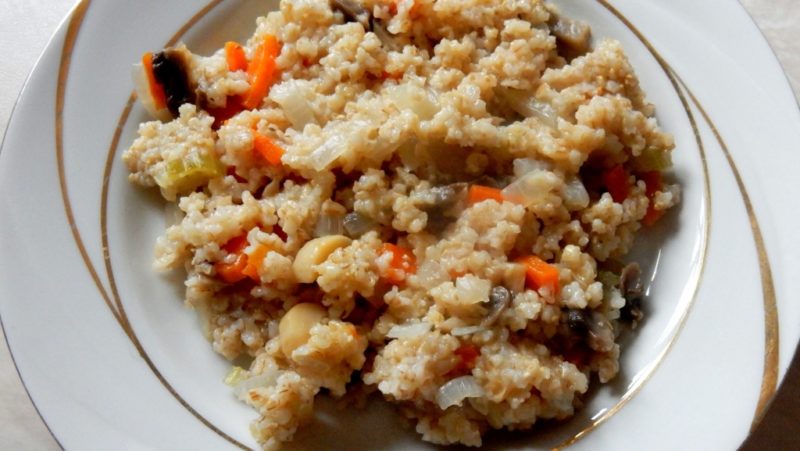
For a dish from the box take:
- barley groats - 1 glass;
- fresh champignons - 3 pcs.;
- bow -1 pc.;
- carrots - 1 pc.;
- celery stalk - 1 pc.;
- vegetable oil - 3 tbsp. l .;
- water - 2 tbsp.
Rinse the barley groats and put them in the multicooker bowl. Finely chop the vegetables and celery stalk, mix and lay on the grits. Put the cut mushrooms to the vegetables. Salt, top with vegetable oil, mix. Pour boiling water. Put the regulator in the “Cooking” position, and the time is 25 minutes.
Barley porridge in a pot.
Due to the special structure of the clay pot, porridge in it turns out to be especially tasty.
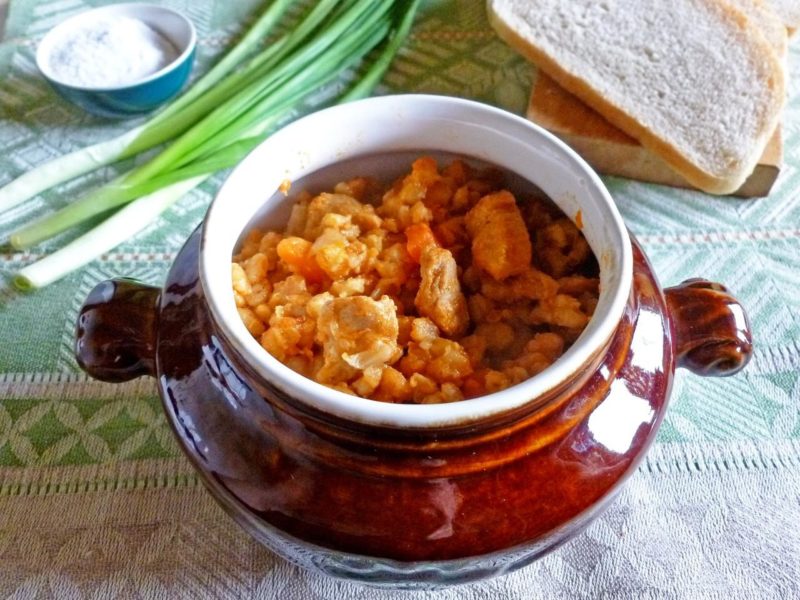
For such a porridge you need to take:
- meat - ½ kg;
- tomatoes - 2 pcs.;
- carrots - 1 pc.;
- onion - 1 pc.;
- tomato paste -2 tbsp. l .;
- vegetable oil - 4 tbsp. l .;
- barley groats - 350 g.
Prepare the meat, cut into slices, lightly fry, stew with the addition of finely chopped onions for 4-5 minutes. Add the carrots grated on a coarse grater. Put out another 2-3 minutes.Put the chopped tomatoes in a frying pan when they give the juice, introduce the tomato paste, salt and pepper to taste, heat. The resulting mixture is divided into 4 parts. Put in a pot a layer of meat with vegetables, cover with barley groats. Alternate layers so that the last is croup. Pour everything with hot boiled water and place in an oven heated to a temperature of 180 ° C for 50 minutes.
Milk barley porridge with pumpkin and dried apricots.

To prepare a delicious porridge, take:
- milk - ½ liter;
- barley groats - 100 g;
- pumpkin - 200 g;
- dried apricots - 100 g;
- butter - 20-30 g;
- water - 300 ml;
- salt, sugar - to taste.
Pour the peeled and cut into small pieces water, add a little sugar and cook until soft. Pour pumpkin with barley grits, pour milk, and simmer until cooked. Add butter, chopped dried apricots to the finished dish. Wrap the bowl with porridge and let it brew for 20-30 minutes.
Grandma's soup.

For soup you will need:
- meat on the bone (pork or beef) - 600-700 g;
- water - 2 l;
- potatoes -2 pcs.;
- carrots - 1 pc.;
- onion - 1 pc.;
- butter - 30 g;
- barley groats - 80 g;
- salt to taste;
- greenery.
Cook the broth from the prepared meat. The cooked meat is taken out, separated from the bones, cut and laid in a pan. Diced potatoes are placed in the prepared broth and brought to a boil. The prepared cell is laid in a pan and boiled until tender.
Vegetables are cut, fried in butter and laid in soup. The dish is salted, boiled for another 3-4 minutes. Before serving, sprinkle the soup with fresh herbs.
Today barley groats are undeservedly losing popularity. But a cheap, healthy box, with proper preparation, can become the main decoration of even a festive table.












